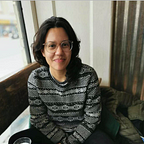Creating safe spaces online
At Barnardo’s we want to reach and support more children and young people needing our services in a way that works for them, so we can provide even better care.
This starts with seeing the world through their eyes. Through user research and co-design, we’ve been working with vulnerable children and young people using our services to explore how we can improve digital services for a generation that’s already growing up digital.
One of the major themes we’ve identified is safety and trust.
Why does it matter?
Despite the large numbers of young people using digital tools and platforms every day, the vast majority of digital services are not designed with young people in mind — especially vulnerable ones dealing with sensitive personal matters.
This not only means they could be better and easier for young people to use and understand, but that they could — and should — also be safer.
How can we help?
We want children and young people using our online services, such as our website and any specific apps we develop for them, to feel comfortable and confident so that they can engage with and benefit from them.
We also want them to feel safe and supported every step of the way.
Working with over 100 vulnerable young people who currently use our services — and frontline Children’s Services* staff across the UK — we asked a simple question:
How can we create a safe online environment for our service users to connect, share and communicate?
Here’s what we learned:
A number of things make young people feel unsafe online:
- The risk of posts going viral
- Peers seeing their online activity, with the potential to tease them
- Others knowing what they’ve been searching or looking for
- That they could be personally identified
- Not understanding how the personal information they send will be used
- Lack of familiarity with the sign posts to support services
- Information being too hard to follow
They’ve developed responses to protect themselves:
- Using Snapchat, as conversations disappear
- Blocking people / comments
- Disengaging from conversations
- Creating fake profiles
- Avoiding getting in touch with Barnardo’s for help and support
They want conversations on their own terms, facilitated by a trusted adult
The young people we spoke to want to be able to have confidential conversations online when using our services, but they want to have the support of adults who they know they can trust with similar training and characteristics to the service workers they’re familiar with at Barnardo’s.
They need to ease into difficult topics
Young people absorb information differently to adults, and they need a way to calmly ease into difficult topics so they can fully engage with the content. They also want to leave online services feeling more positive and hopeful about their current situation.
The young people we spoke to suggested using games, positive content and responsive design to achieve this.
They want privacy online
Our young people told us they want to help others by sharing practical tips and social media posts, so their peers can benefit from their personal experiences to self-help in similar situations. However, they often don’t want anyone online to be able to trace things back to them.
Exposing their personal histories and experiences makes them feel vulnerable. Without the protection of anonymity, the opportunity for sharing sensitive information is often quashed by fear that their personal histories will be exposed.
They’re scared of bullying
Our young people want to speak to other young people who have shared similar life experiences. However, they worry that the person they are speaking to may not be genuine, or that what they say could go viral online and make them a target of cyberbullying.
They don’t want to repeat themselves
The young people we spoke to often struggle to share their experiences; they don’t want to keep repeating themselves to different adults.
Helping young people help themselves
We want children and young people using Barnardo’s online services to feel empowered to help themselves where appropriate, so that they don’t always need to rely on adults to find answers to their questions, and can get information at times and in places that suit them.
We also want them to feel safe and comfortable when doing it.
Based on what we’ve heard, here are our top three tips for creating safer spaces for young people online:
- Have responsive, trusted adults moderating, safeguarding and supporting young people online at all times
- Enable young people to control and edit their own privacy settings quickly and easily
- Make terms, conditions and rules of engagement upfront, transparent and easy for them to understand.
What’s next?
We’ll be using what we’ve learned to shape and develop our digital services for children and young people, and we’re aiming to share that knowledge as far and wide as we can to create better outcomes for more children.
Want to learn more about what we’re doing to create better outcomes for more children, and how we could help you do the same? Visit our website to get in touch, or leave a comment below.
Jess is a Service Designer in the Barnardo’s digital team. To get the latest updates from the team, subscribe to blog.barnar.do on Medium, and follow #futurebarnardos on Twitter.
____________________________________________________
* Our research spanned three discovery projects, where we:
- Held two co-design workshops with 36 young people with learning disabilities, disabilities and visual impairments aged 10–26 years from Newcastle, London, etc.
- Held focus groups with 40 young people with mental health concerns across London (inner and outer), Manchester and Barnsley
- Interviewed front-line staff working directly working young people across all regions at Barnardo’s
- Held focus groups with 6 young people in care and 1–2–1 interviews with 10 not in care, aged 12–15 across London, Edinburgh, Bristol and Birmingham
